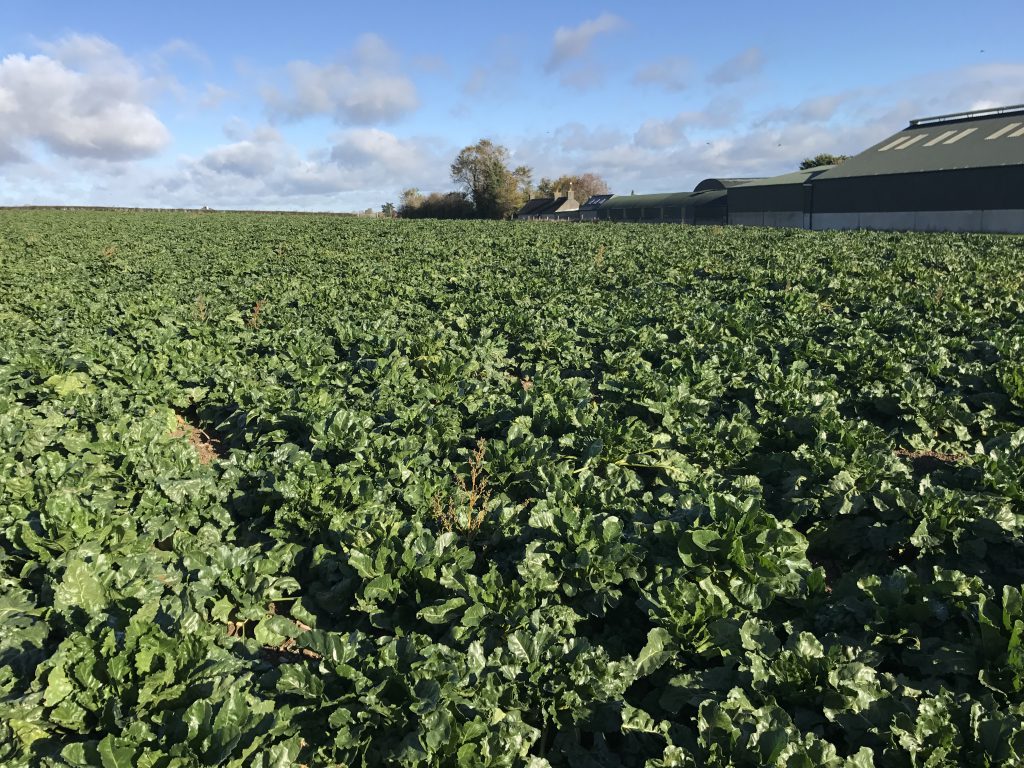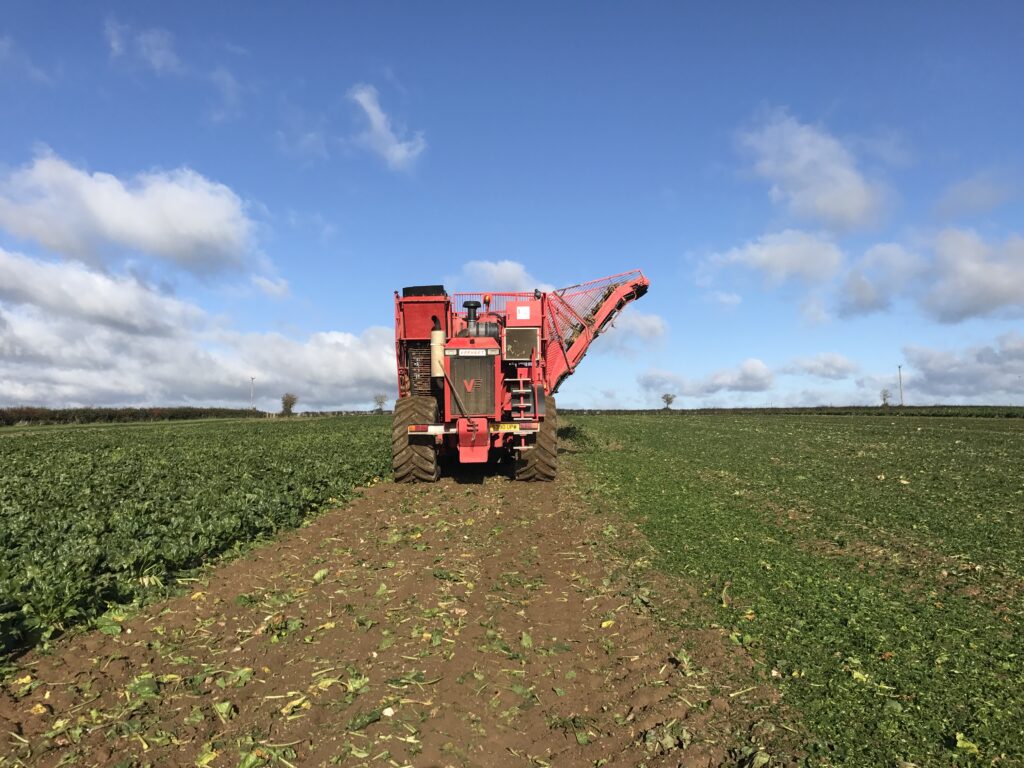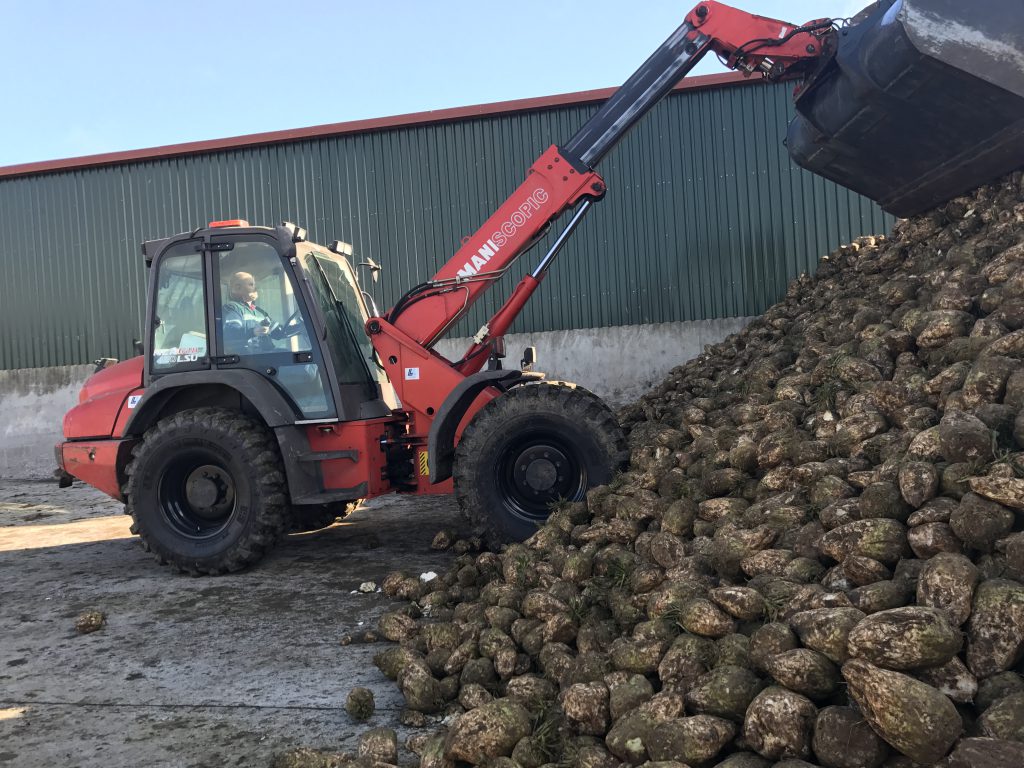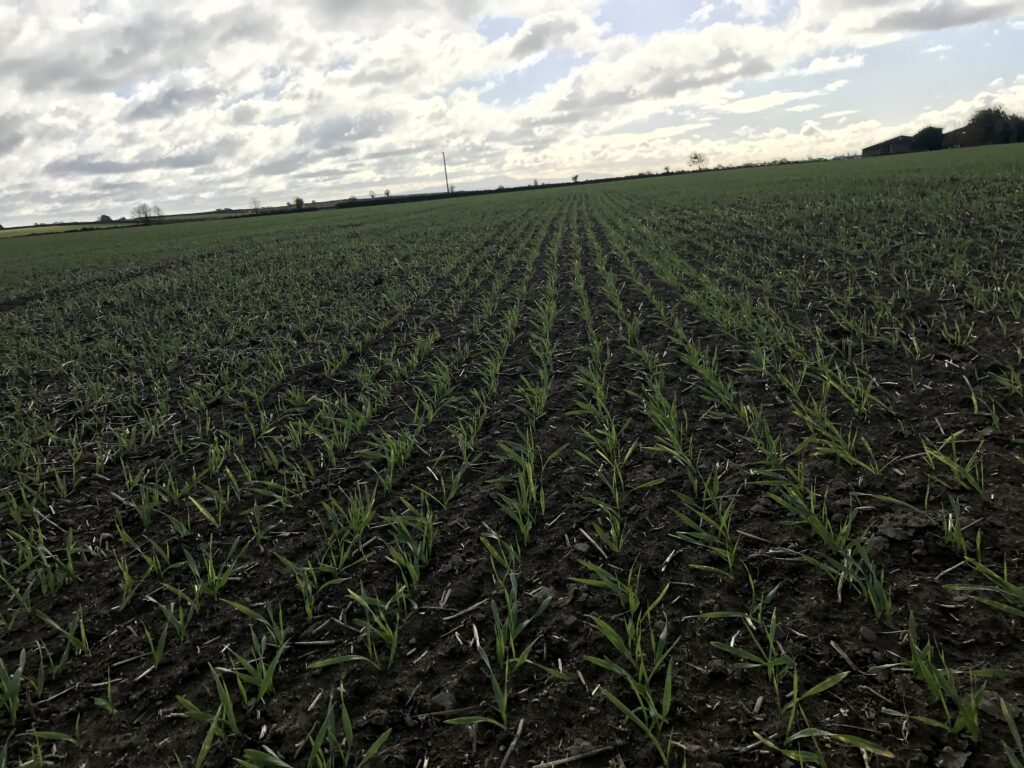John Mulhare pulled his beet crop at the end of October and, having watched the crop from cultivation, AgriLand checked in to see how the crop fared out.
This year looks like it will be a low-yielding one for beet crops. John expects his crop to yield around 25t/ac, even though it did establish relatively well. It was sown at the end of April and received just the right amount of moisture to get established.
However, some later sown crops were not as successful. John explains some of the reasons why it was a tough year on growers; weed control was a big issue.
“In terms of weed control, I’m one of the lucky ones. My beet is nearly as clean as other years, though it’s not spotless.
“There’s a lot of dirty crops this year which is to do with the dry weather. In some cases, however, it might have been the decision on when to spray. Some growers still look at the beet, not the weeds.”
John advised growers to split the herbicide applications on beet crops in this season’s CROPS WATCH series in association with TerraChem.
“I split the first and second spray, because the beet was under so much pressure with the drought. I probably used more Uplift than I normally would. It still got its dedicated nutrient spray – two fungicides and its late-season magnesium and boron.
“Splitting the two herbicides was more costly, but it was definitely kinder on the beet. We don’t have a lot of wild oats here, but the whole crop gets a graminicide – that’s managing the farm, not the beet crop,” he explained.
Disease wise, John said there was the tiniest bit of rust visible on the crop, but it was pretty much spotless.
John also noted that there were gaps in his crop’s establishment and he thinks some of this may have been down to slugs. However, he avoided using slug pellets; he didn’t think the problem was as bad because of the effect they can have on the environment.
Expected yields
John stores his beet in a clamp in the yard and it is taken away, washed and weighed as it is needed. So, each year he knows exactly what his crop yielded.
Last year, John’s beet crop reached a high of 40t/ac.
“If that does 25t/ac, it’s as much as I’m expecting. Reports so far from people who have pulled entire fields is 22t/ac; another grower had 26t/ac washed.
“My worst historic yields were 25t/ac in 2012 – with the wet year – and 2013 yields were 24t/ac with the dry year. It’s looking like this is another 25t/ac year, though it got everything it possibly could have.”
Seedy beet
A week before John pulled his beet, the seedy beet was pulled from the field and taken out. He describes it as the most important job of the year.
Feeding out the beet
The crop was coming up very clean, but John will still wash it. He said: “The dry matter of a variety of beet will tend to be the same every year, but it should be at the high end of the range of a given variety this year.”
John always washes his beet.
“It’s so clean you’d argue you don’t need to wash it. From the point of view of buying the beet, it probably works out cheaper for the buyer to get it washed even though you’re paying a bit more, after you do the sums on tare.”
The beet is being fed with bread, distillers and a balancing ration, as well as an acid buffer and feed-grade urea.
Happy with agronomy
John was happy with how his crop worked out and the decisions he made throughout the season.
“I’m happy enough, I didn’t do a lot different in agronomy, just split the second spray to reduce the stress. I put on two fungicides, which, looking at the tops, I think it paid off. As usual, we didn’t go back with late-season nitrogen.
An awful lot of nutrient deficiencies started to show up in early July, but the way I’m looking at it is the beet never sat down because of drought.
“It never sat down with the drought and I think the reason for that was you were getting what I would call a hair dryer effect of hot temperatures and wind all through May and June.
“This dried out the top of the ground where the nutrients were in the top 6-7in, but the beet root was below this and there was moisture deep down that it could access.
“There was enough moisture to just keep the beet ticking over, though not for new plants to strike. It didn’t wilt with the drought, but it did get hungry – it went every shade of yellow.
“We gave it extra manganese, but it was actually looking for nitrogen (N), sulphur (S), phosphorus (P) and potassium (K) and, when the rain came, it transformed in the space of four or five days and away it went.”
Beet will thrive in the hot weather once it is well established.
“Once beet gets going and has moisture, like the early crops where the root was down deep enough to find it, it is fine. For some of the late-sown crops, it was like sowing the beet in sand. I sowed the last day of April, but there were crops sown up to early June.
I saw crops sown in mid-May this year and there was only 70-80% establishment and I saw crops sown in mid-June where there was only 40% establishment.
“The other 50-60% came when the rain came and the growers who had good weed control have pretty much 90% establishment; but growers with bad weed control, they just couldn’t get on top of it.
“I was happy enough with the way everything worked. There was a huge burst of growth when the rain came.”
What to do with late-emerged plants
John explained that farmers who have the option of leaving beet in the ground for as long as possible should do so, even up to spring time, to capitalise on as much growth as possible.
That late-season beet – it’s like baby parsnips at the moment – it will stay growing, depending on the weather.
“For those crops that are very small, they could be left until next February; with the really bad crops, some people won’t have a choice – they’ll have to go in and pull it.”
Following crop
John disced the field straight after the crop was pulled and planted Bennington winter wheat the following day with a Horsch seed drill.
“We disced in the tops two years ago and I couldn’t get over the kick that the wheat crop got from the beet leaves being on top of the ground versus being ploughed down; it’s phenomenal.
Part of the reason I do it is if you had any viable seed left from the seedy beet in the crop, if it’s left at the top of the ground, hopefully there’s a better chance it will strike in this season coming and it will be easier to control.
John also sowed bazooka winter barley and it is well up.








